Within the tropical paradise that is Bali, Ubud is the spiritual heart of the island. With exotic jungles, thousand-year-old temples, and verdant rice paddies, Ubud maintains an otherworldly mystique that transcends time. It’s easy to appreciate how the area has long been a mecca for ancient pilgrims and, more recently, the yoga and wellness crowd seeking their own form of enlightenment.
This guide details how to best spend 3 days in Ubud, Bali. You’ll catch all the top sights and iconic photos, while still having time to relax in a place known for its restorative properties.
Jump to:
How to Get to Ubud
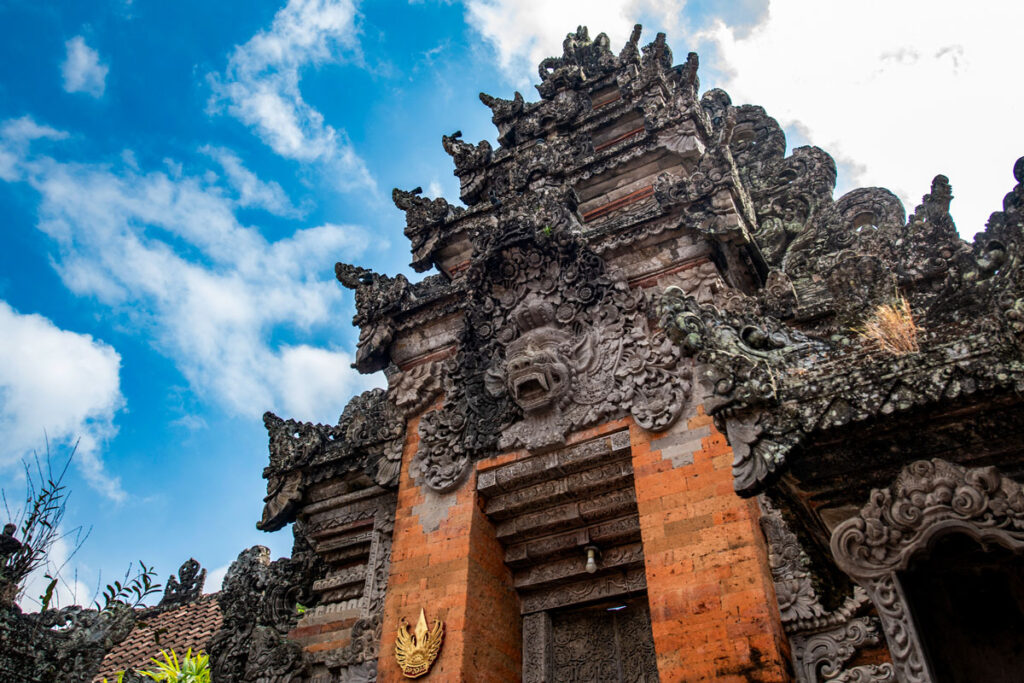
Flights
Bali has one commercial airport, Ngurah Rai International, located just south of Denpasar. From here, the drive to Ubud takes just under one hour.
Shuttle Service
Many Ubud hotels offer roundtrip shuttle service. Whether you’re flying into Bali or arriving from another part of the island, check with your hotel to see if they provide transportation.
Private Car
Many Balinese work as private drivers, offering affordable rides for anywhere you want to go on the island. The drivers do not have websites, instead operating off SMS and word of mouth.
Every tourist seems to have a “guy”, recommended to them by a friend who has visited Bali previously. For what it’s worth, we used Agus, who was great (phone: +62 813-3764-8755). Another wonderful driver is Reny (+62 819-9785-3082).
Grab (the Uber of Southeast Asia)
Grab is extremely prevalent around Bali, and offers a low-cost and convenient way to get around.
Download the Grab app in the Apple or Google Play store, and you’ll be able to call a motorbike or vehicle anytime you have WiFi or cell service.
Drivers typically arrive within minutes, and rates are insanely cheap. For example, you can get from Ubud to a hotel 20 minutes away for under $1 USD.
Getting Around Ubud
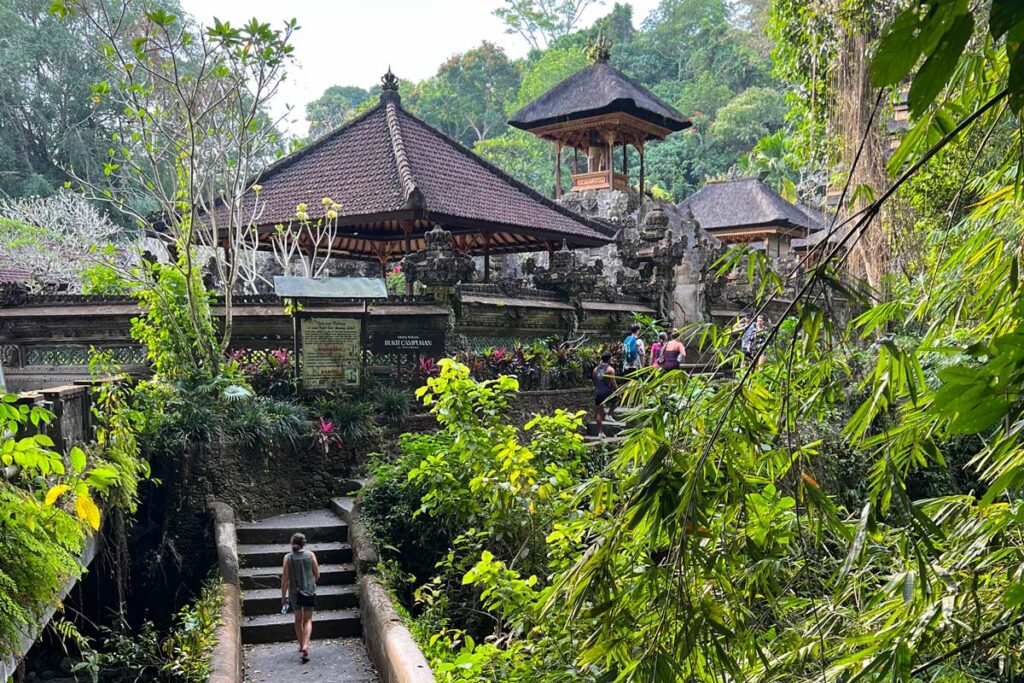
There is no public transportation around Ubud, but the city center is easily traversable by foot.
Additionally, the Grab app has made private transportation incredibly easy. Simply download the Grab app (see above) and call a ride anytime you need one.
How Many Days in Ubud?
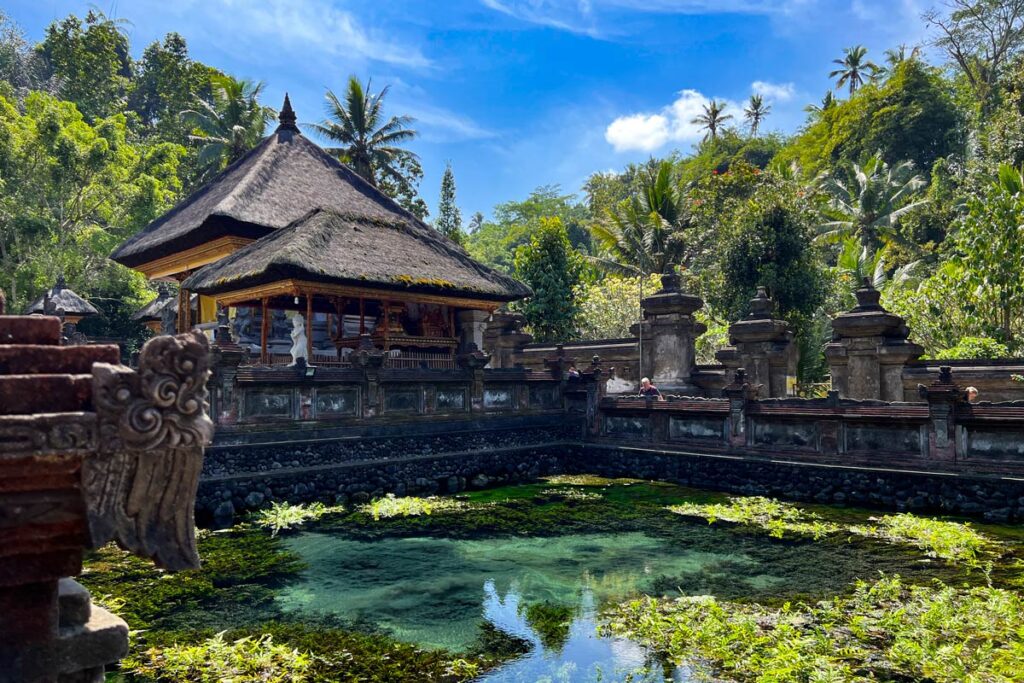
Depending on how leisurely you want your vacation to be, you can spend anywhere from a few days to a week in Ubud.
We recommend at least 3 full days minimum, to see the city center and some surrounding highlights.
But be warned, three days may still feel rushed. If your schedule has the flexibility, allow yourself an extra day or two beyond this itinerary, with nothing on the agenda. You won’t regret the languorous days, and will leave Ubud feeling fully restored.
3 Days in Ubud
Day #1: Ubud City Center
On your first day in Ubud, get oriented by exploring the town’s main highlights.
Ubud Palace
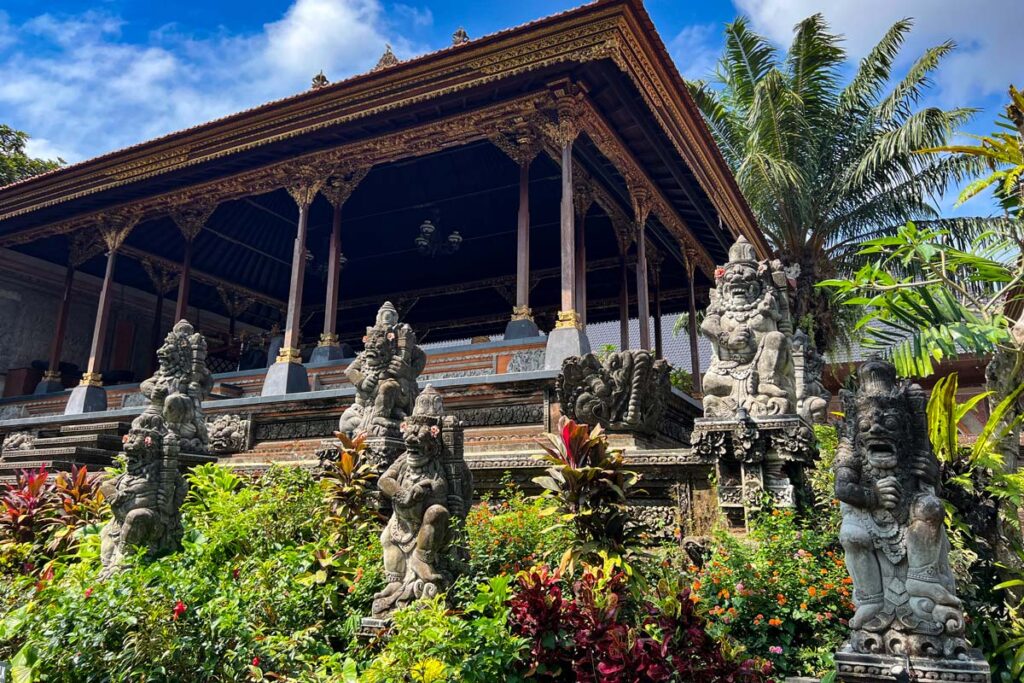
Begin at Ubud Palace, which sits on the city center’s primary intersection and town plaza. This is the historic residence of the royal family, and while not ancient (dating from the early 19th century) it is still a fantastic example of traditional Balinese architecture.
The grounds are not large, and can easily be explored in 30 minutes. There are also frequent shows of traditional Balinese dance – if you’re lucky, you may catch a performance while you’re there.
Pura Taman Saraswati Temple
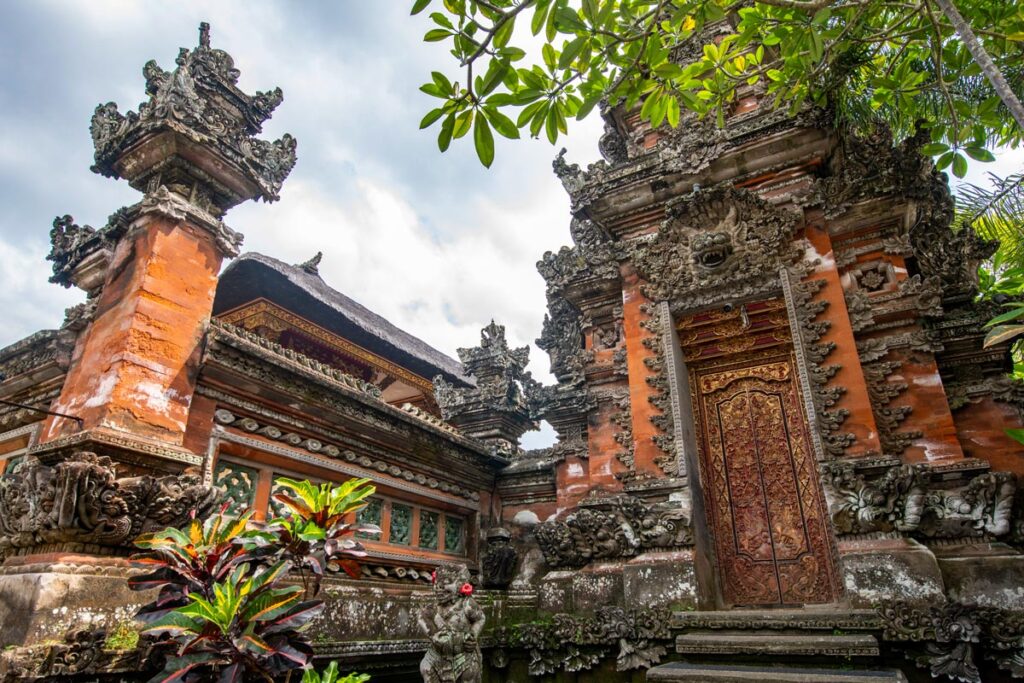
One block down from Ubud Palace is Saraswati Temple, also known as the Ubud Water Palace. Dedicated to the Hindu goddess of the same name, this iconic structure is particularly famous for the expansive lotus pond that decorates the front entry.
Guests will need to don the traditional garb that is provided at the ticket counter, and cannot visit the inner sanctum of the complex. But it’s still a stunning temple to visit, with exquisite architecture.
Ubud Monkey Forest
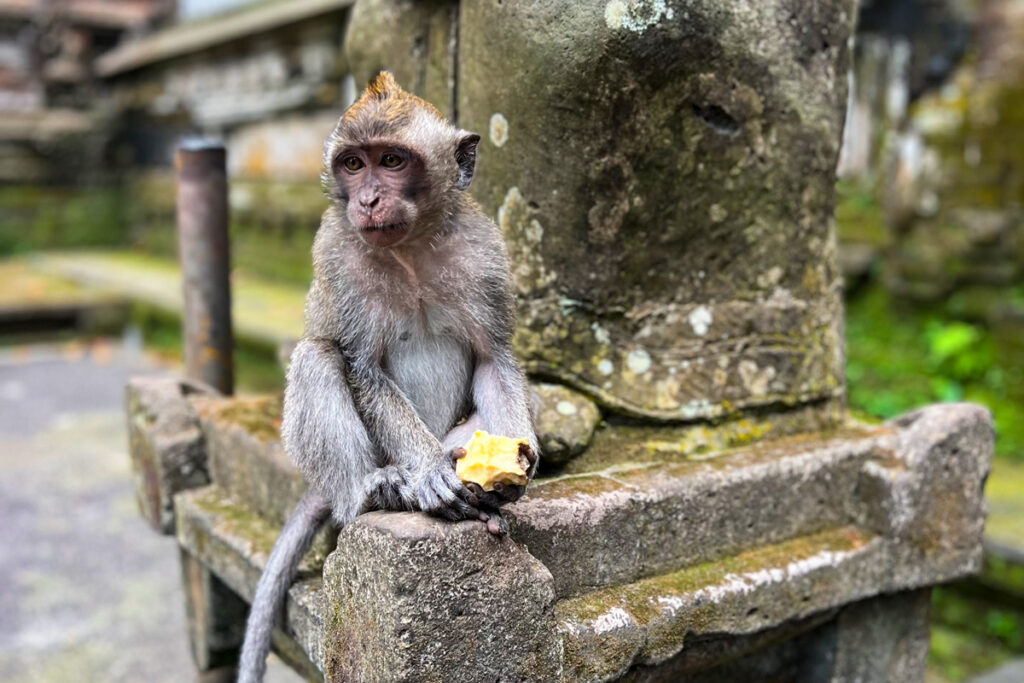
Macaques are pervasive in Ubud, but never more so than in the aptly named Ubud Monkey Forest. This lush park and sanctuary bisects the heart of town, and covers 10 hectares (25 acres). Meandering pathways crisscross under thick foliage and dripping vines, and you can even explore the three 14th century Hindu temples that reside within the park boundaries.
Here, the primates run wild, and are typically bolder than the humans that enter their domain.
Safety Tip #1: be careful of your belongings. The macaques love snatching anything they can grab, and are smart enough to steal phones and sunglasses to barter for snacks. Don’t bring anything with you that you don’t absolutely need. Especially don’t carry food!
Safety Tip #2: don’t make eye contact with the monkeys. They see this as a sign of aggression, and will not hesitate to react. One member of our group momentarily forgot this cardinal rule and was immediately punched in the face.
Directions: You can walk part of the Monkey Forest for free, and will inevitably still see curious macaques. Take Jl. Monkey Forest, which is a main road that hugs the northern border of the park.
Alternatively, you can also pay the small entrance fee to visit the heart of the sanctuary and its temples.
Goa Gajah (Elephant Cave)
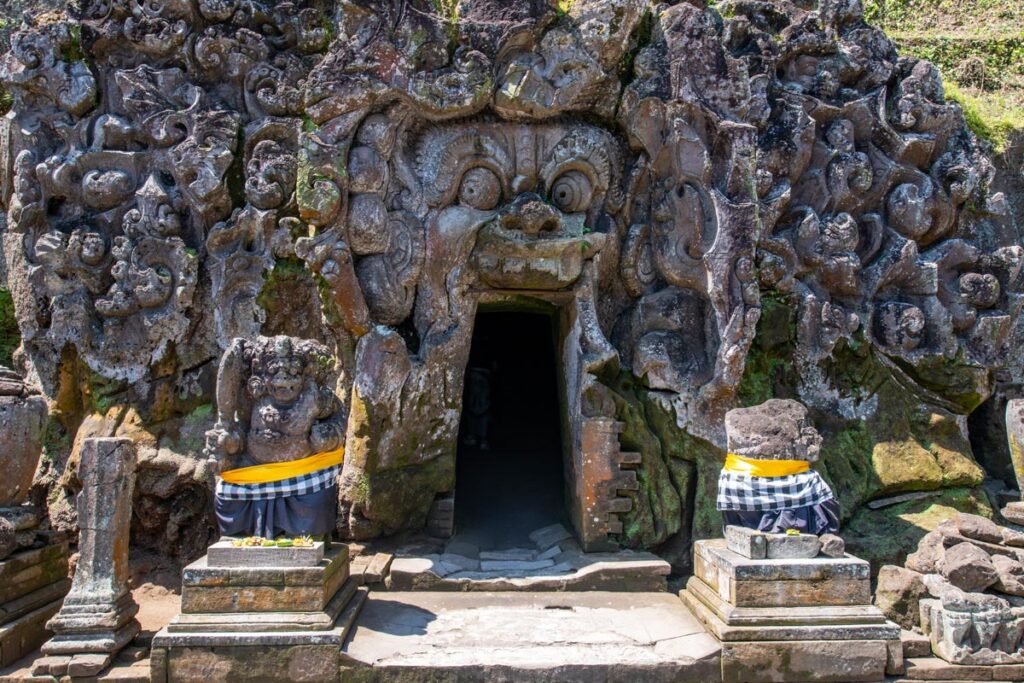
This fascinating complex is one of the most ancient structures in Ubud. Originally a temple from the 9th century, it was only rediscovered by archeologists in the 1920s, and feels straight out of Indiana Jones.
The entire complex can easily take an hour to explore in-depth, but the crown jewel is a cave whose entryway is intricately carved into a face (presumed to be either an elephant or the Hindu god Ganesh).
Inside, you’ll find a narrow passageway to an inner sanctum that pilgrims have traveled to visit for over a thousand years.
Campuhan Ridge Walk
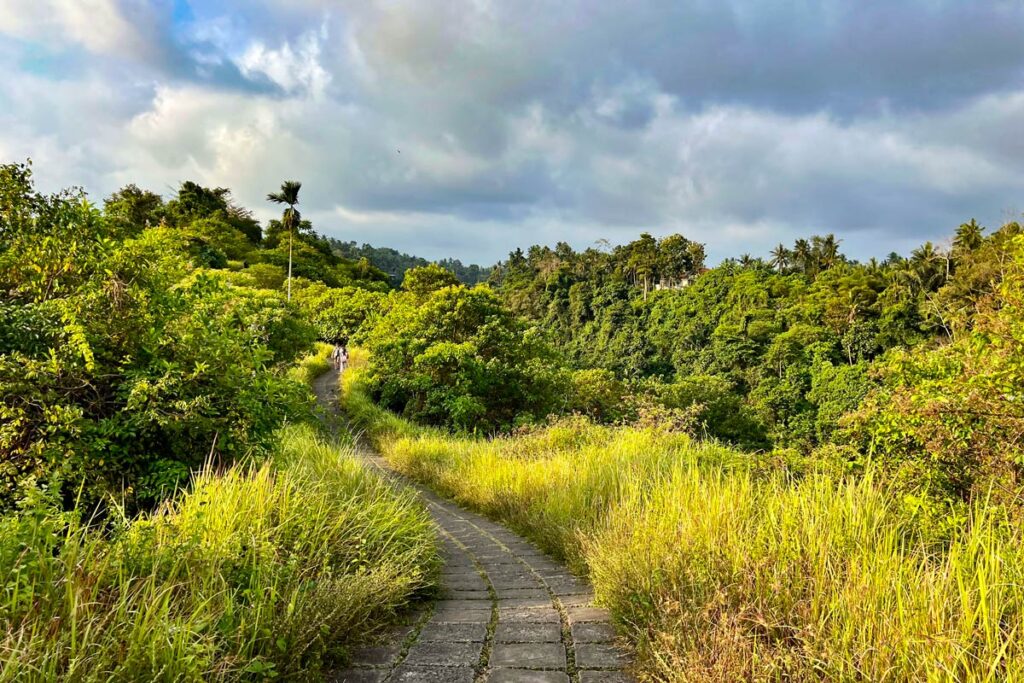
This famous pedestrian pathway traverses one of the primary hilltops running north out of town. Over 4.5 kilometers (approximately 3 miles) roundtrip, you’ll gently wind over the ridgeline with views of peaceful rice terraces and resorts tucked into the hillsides.
The walk is best either in the early morning or before sunset, when you can avoid the midday heat and the light is soft.
Day #2: Temples and Terraces
Tirta Empul Temple
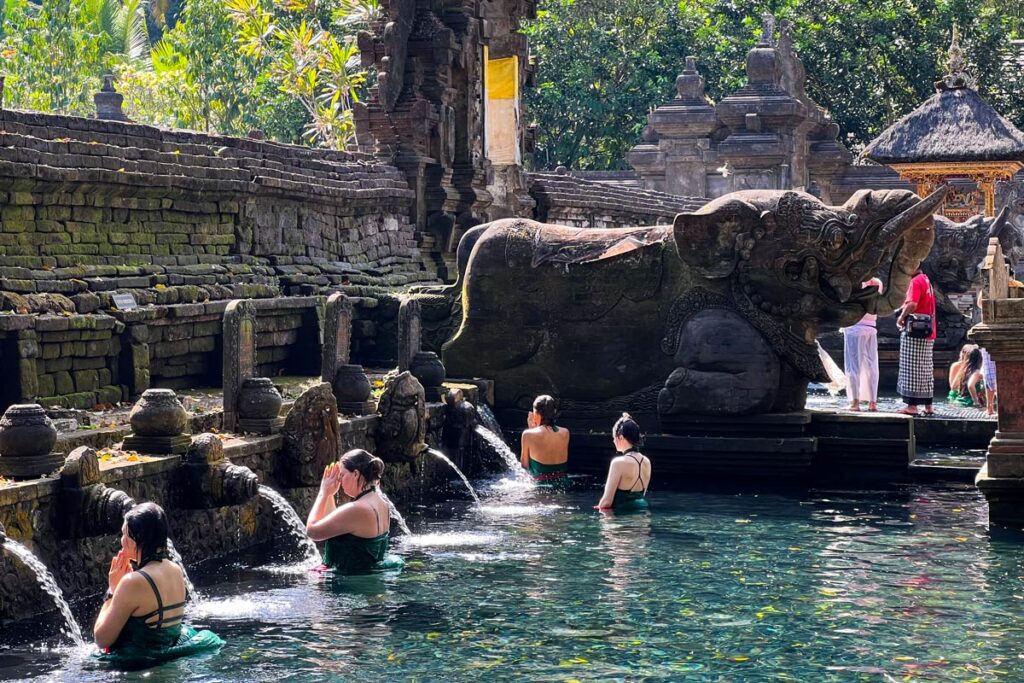
If you’re going to visit any temple in Bali, make it Tirta Empul. First built in 962 A.D. to honor the Hindu god Vishnu, this ancient water temple is considered one of the holiest places on the island.
The waters stem from local springs, flowing down the mountain hillsides before feeding into two pools that have purified pilgrims for over a thousand years.
Visitors will receive proper attire to enter the pools with their entry ticket. Please just remember that this is an active house of worship, and be respectful during your time here.
While the ritual purification pools are the main attraction, the entire complex is worth exploring. Plan to spend an hour or more here – it’s best in early morning, before the crowds and midday heat arrive.
Directions. Tirta Empul is located approximately a 20-minute drive outside of Ubud.
Gunung Kawi Temple
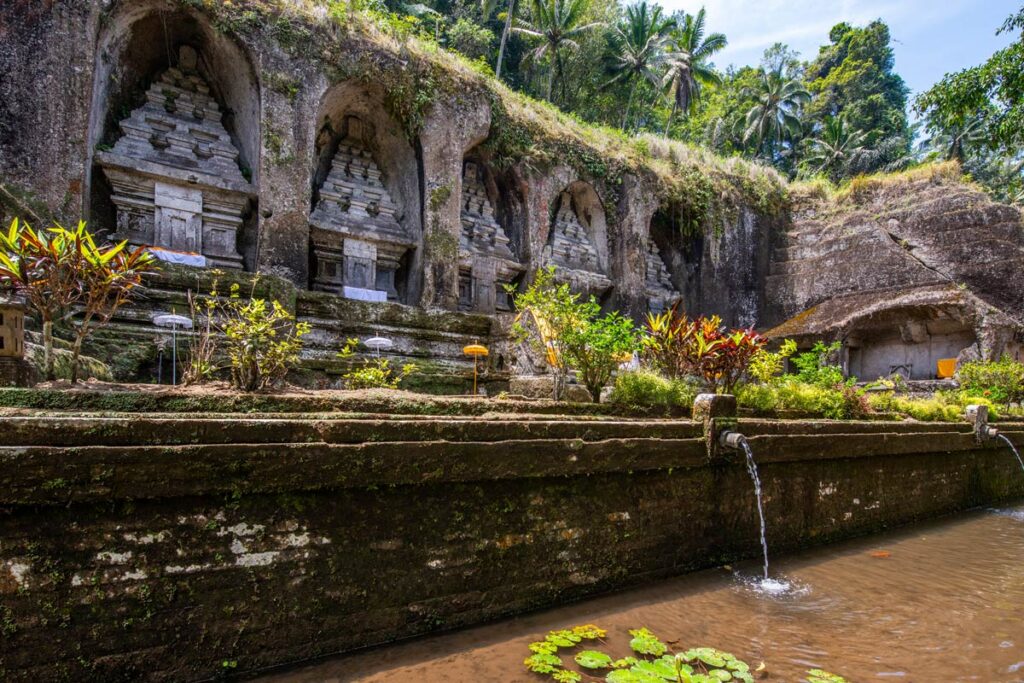
Located 5 minutes down the road from Tirta Empul, Gunung Kawi is another temple marvel. Known as the Valley of the Balinese Kings, it includes 10 shrines carved into a cliff in the 11th century, as well as rice terraces and jungle terrain.
To get here, you’ll park at the top of the hill and then walk approximately 10 minutes down into the ravine where the temple is located. The entire visit should take just under an hour.
Tegallalang Rice Terrace
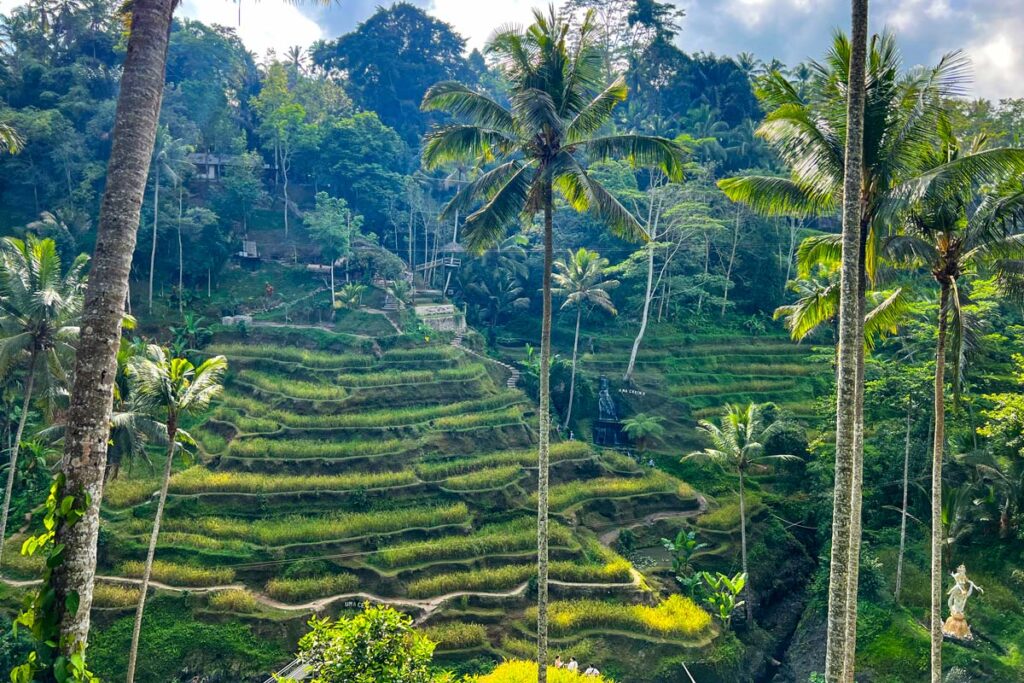
If you ever see lush images of verdant rice terraces carved into hillsides (which seem to be omnipresent on Bali marketing campaigns), it’s inevitably Tegallalang. Located about halfway between Ubud and Tirta Empul, today is a good time to visit the iconic photo spot, on your way either to or from the temples.
Know before you go: What once used to be expansive, meandering trails along the terraces have recently been closed off by enterprising locals, who recognize an income opportunity when they see one.
Now, the many terraces are fenced off from one another, with each requiring a paid ticket for entry. You’ll still be able to walk a decent distance along “your” section, but it’s not the holistic experience it used to be.
Directions: while you can choose from multiple entry points, we personally did Uma Ceking, which is considered one of the primary stretches of Tegallalang.
Day #3: Wellness for Mind, Body, and Soul
For decades, Ubud has served as an international hub for spiritual health and wellness, and indulging in some self-care while here almost feels like a mandatory “cultural experience”. Take a day for restoration, luxuriating in your activities of choice.
Yoga
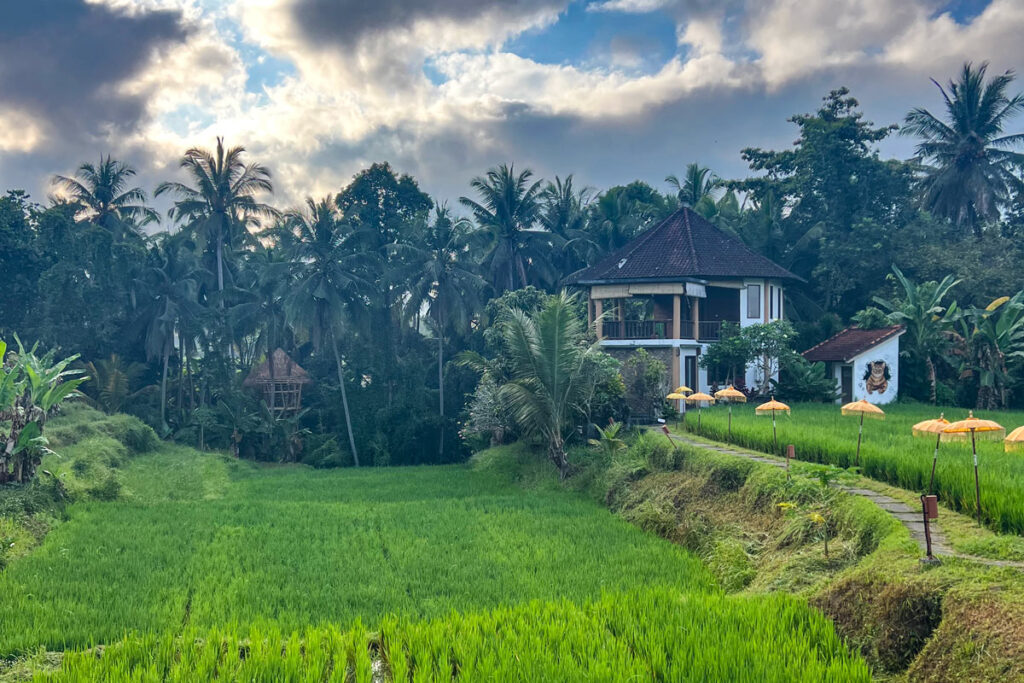
Whether you prefer a power vinyasa flow or a restorative yin, there are more yoga studios in Ubud than you could ever visit in one trip, with classes for every style and ability level.
Some of the most famous studios include Radiantly Alive and The Yoga Barn.
Personally, we are partial to Ubud Yoga House, which came recommended to us by a few different professional yoga instructors in Ubud for training. Situated along a serene rice paddy, on the edge of thick jungle, the morning vinyasa class is the perfect way to start your day.
Massage

Day spas abound in Ubud, where you can choose from a host of treatments that are all relatively cheap for those used to Western prices.
Some of the more highly rated spots include either Ubud Traditional Spa, Jaens Spa Center, or Karsa.
Or, for a cheaper hidden gem, we also found Synergy Spa, where a modest storefront belied a quality Balinese massage. Each treatment comes with aromatherapy oils of your choice, as well as a refreshing tea afterwards.
Sunrise Hiking
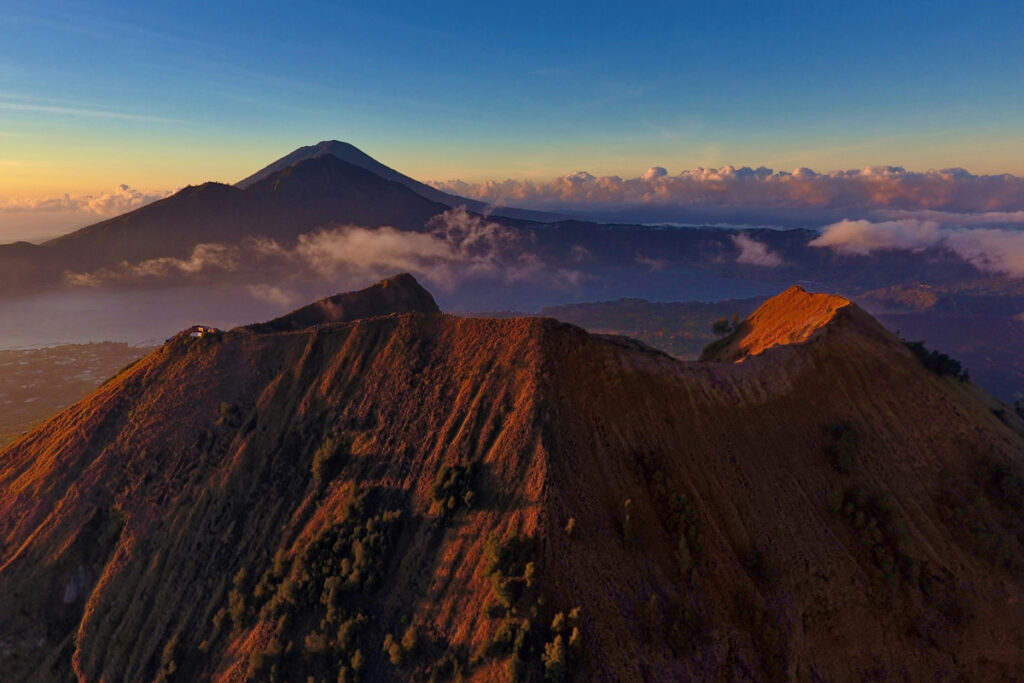
For those who get their zen from being active in nature, experiencing sunrise from the summit of a Balinese volcano is a popular day hike from Ubud. Mount Abung and Mount Batur are the two most popular peaks, with Abung being more challenging than Batur.
Be forewarned, these adventures are not for the faint of heart. Summiting by sunrise requires a departure from Ubud at either 11 p.m. (for Abung) or 2 a.m. (Batur), and each hike consists of both vertical climbing and challenging terrain.
However, if you’re in decent physical shape, the experience of witnessing a new day dawn from above the clouds can be unforgettable.
While some people choose to do the hike themselves, we recommend going with a guide, who will also handle all transportation and logistics for you.
If you want to learn more about either of these hikes, check out the World Travel Guy’s summary of either Mount Abung or Mount Batur. We read plenty of articles beforehand, but no one summed up the experience as well as he does.
